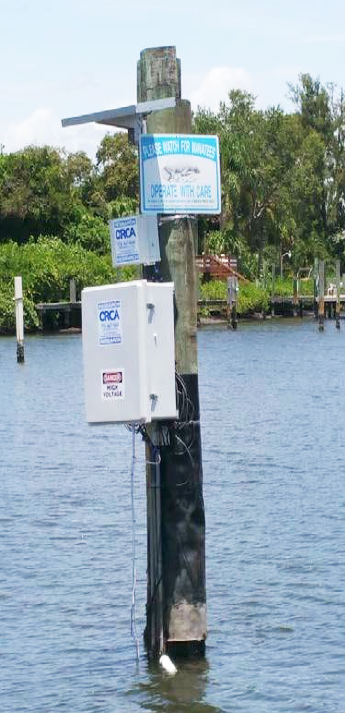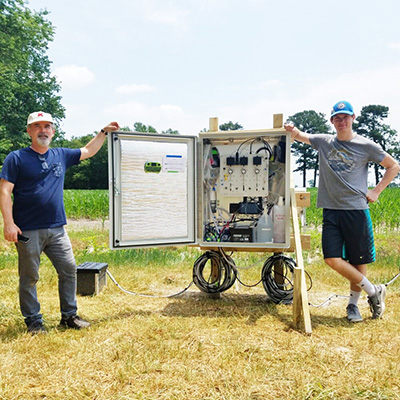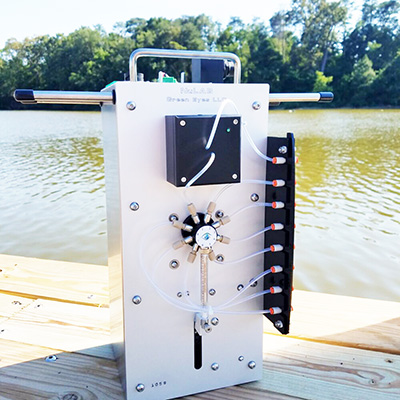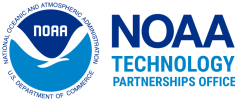Crucial federal support provides catalyst for small business growth
Early support can have a lasting impact
Sometimes success comes with time and perseverance, but an early boost can make all the difference – especially when it comes to a small company’s chances of getting off the ground.
When small business owner Vincent Kelly, founder and director of Green Eyes, LLC, was asked what his company gained from its participation in the NOAA Small Business Innovation Research (SBIR) Program, his response hit a key note. “Here I am, some fifteen years later, and the business is standing on its own and doing reasonably well. That would not have happened without our NOAA SBIR funding.”
Kelly’s response illustrates what lies at the heart of the mission of the NOAA SBIR program, which is part of America’s Seed Fund. As one of the largest sources of early-stage capital for technology commercialization in the United States, NOAA SBIR support offers an opportunity for U.S.-owned and -operated small businesses to engage in federally supported research and development that has a strong potential for commercialization.

A small business based on a big idea
Kelly founded his small business, Green Eyes, in 2006 in order to expand on previous research that he conducted at the University of Maryland Center for Environmental Science’s Horn Point Lab. There, Kelly, along with collaborators Dr. Louis Codispoti and Dr. Patricia Glibert, investigated the role of nutrients found in harmful algal blooms.
That research provided an opportunity for the team to scientifically validate data collected by the autonomous nutrient monitors they had deployed for the project, which revealed water-nutrient dynamics previously unknown.
But the passion for research wasn’t the only reason for Kelly to start his small business. The creation of Green Eyes also came about because of what he characterized as his inclination toward an entrepreneurial spirit.
Additionally, Kelly’s prior experience with the Maryland Technology Development Council afforded him the opportunity to meet economic developers who sought to commercialize university technologies, and gave him the chance to learn about federal SBIR funding.

Kelly notes that the rubber met the road when Green Eyes received a NOAA SBIR Phase I award in July of 2007, which supported a 6-month feasibility study and proof-of-concept research based on the company’s technology idea.
Kelly emphasized that NOAA SBIR funding was the first significant award that put money into Green Eyes, and that the company would likely not exist today without that support.
Following the successful completion of their initial NOAA SBIR award, Green Eyes then received Phase II funding in August of 2008. Kelly recalls the day he and his team were notified about their Phase II support. “When we found out that we got the Phase II award, that was a huge day for us.”
Phase II NOAA SBIR awards support further research and development and help companies turn their technology ideas into products with potential commercial applications.

SBIR technology development provides foundation for future commercial success
Green Eyes’ Phase II award funded the research and development of the Coastal Autonomous Self-calibrating Profiler (CLASP), which is a water quality data collection device that is capable of operating autonomously for extended periods of time.
More specifically, the CLASP technology can collect water quality data along an entire water column and at specific depths and sampling intervals. The monitoring system collects a suite of data that can help scientists understand the quality and environmental health of a specific area of water, including temperature, salinity, dissolved oxygen, acidity, chlorophyll fluorescence, turbidity, and nitrates.
The company’s SBIR work has since inspired new research and development, and has laid the foundation for many of the products that Green Eyes created in the years following their federal seed funding. For example, the company has since gone on to develop and commercialize subsequent products which analyze nutrient data, monitor water quality, and sample phytoplankton. Green Eyes also continues to use software that they developed with the support of their NOAA SBIR award.

Impacts of SBIR funding extend beyond technological innovation
As a developing small business, Green Eyes has had a positive impact on local economies. The NOAA SBIR support they received allowed the company to hire employees from the region and provide them a living wage.
Kelly noted that Green Eyes strives to use United States-based suppliers and manufacturers when sourcing the materials needed to create their products, and that they intentionally seek out Maryland-based suppliers whenever possible.
The impact of Green Eyes is not limited to just economic and technological benefits. The company’s mission is to play a meaningful role in the restoration and protection of natural waters by providing accurate and reliable instrumentation to water quality monitoring organizations worldwide.
Through this work, they are contributing to the wider effort to reverse the effects of nutrient pollution and resultant degradation of natural waters.
The importance of America’s Seed Fund
When asked about the importance of the NOAA SBIR Program, Kelly shared his hopes for the program’s continuation, explaining that NOAA SBIR funding was crucial to providing an opportunity for his new company to grow and thrive.
“I didn’t have any personal wealth to start a company, and I never could have done it without any outside funding. SBIR is one of the best opportunities for a new company without revenue.”
Visit the NOAA SBIR Program website to view additional information about the program, read about other NOAA SBIR successes and available technologies, and sign up to receive email updates on potential upcoming funding opportunities.
Note: Any reference obtained from this website to a specific company, product, process, or service does not constitute or imply an endorsement by NOAA.
Published on November 1, 2022 by Evan Merk and Matthew Bryant
Media contact: suzi.webster@noaa.gov
